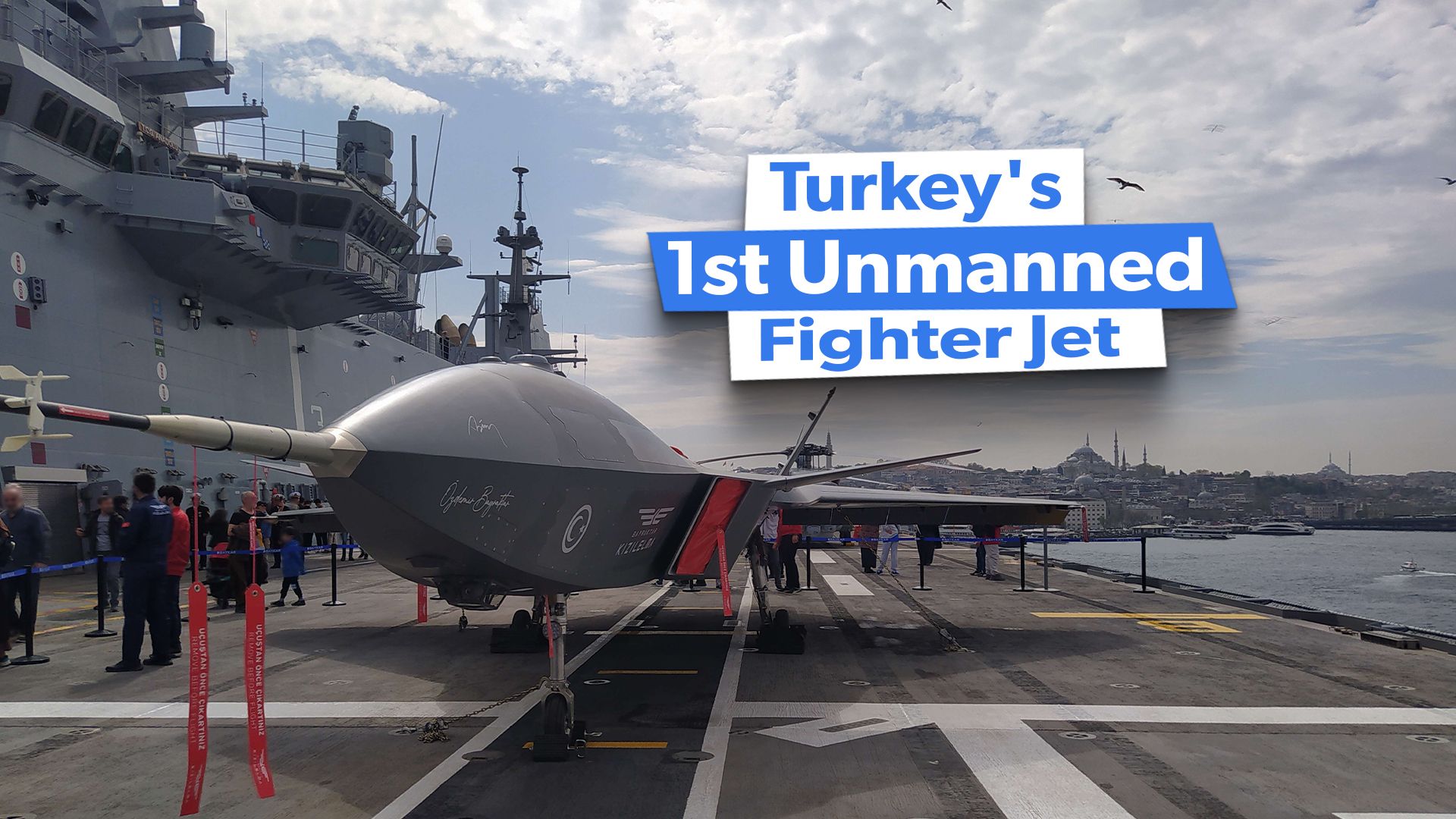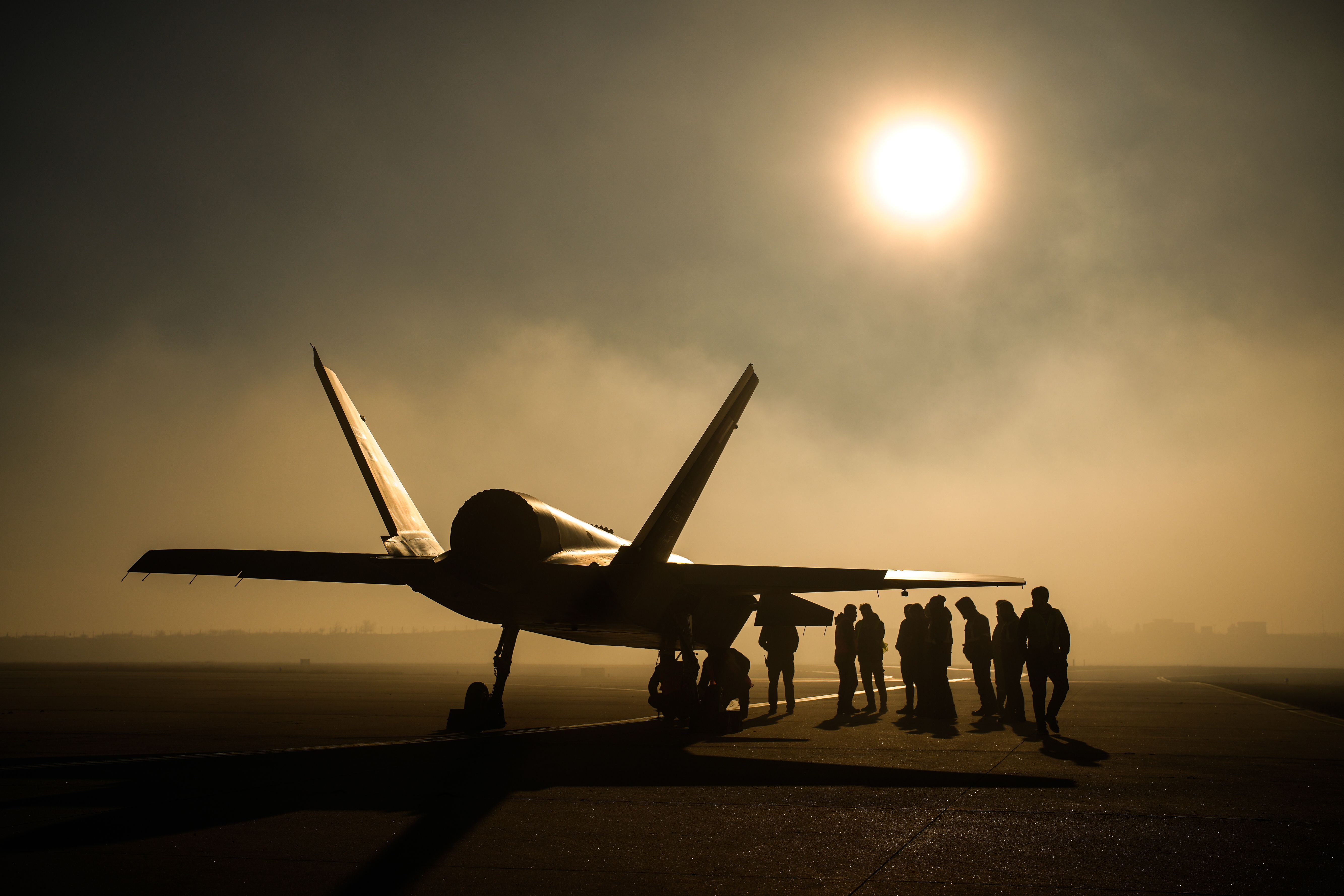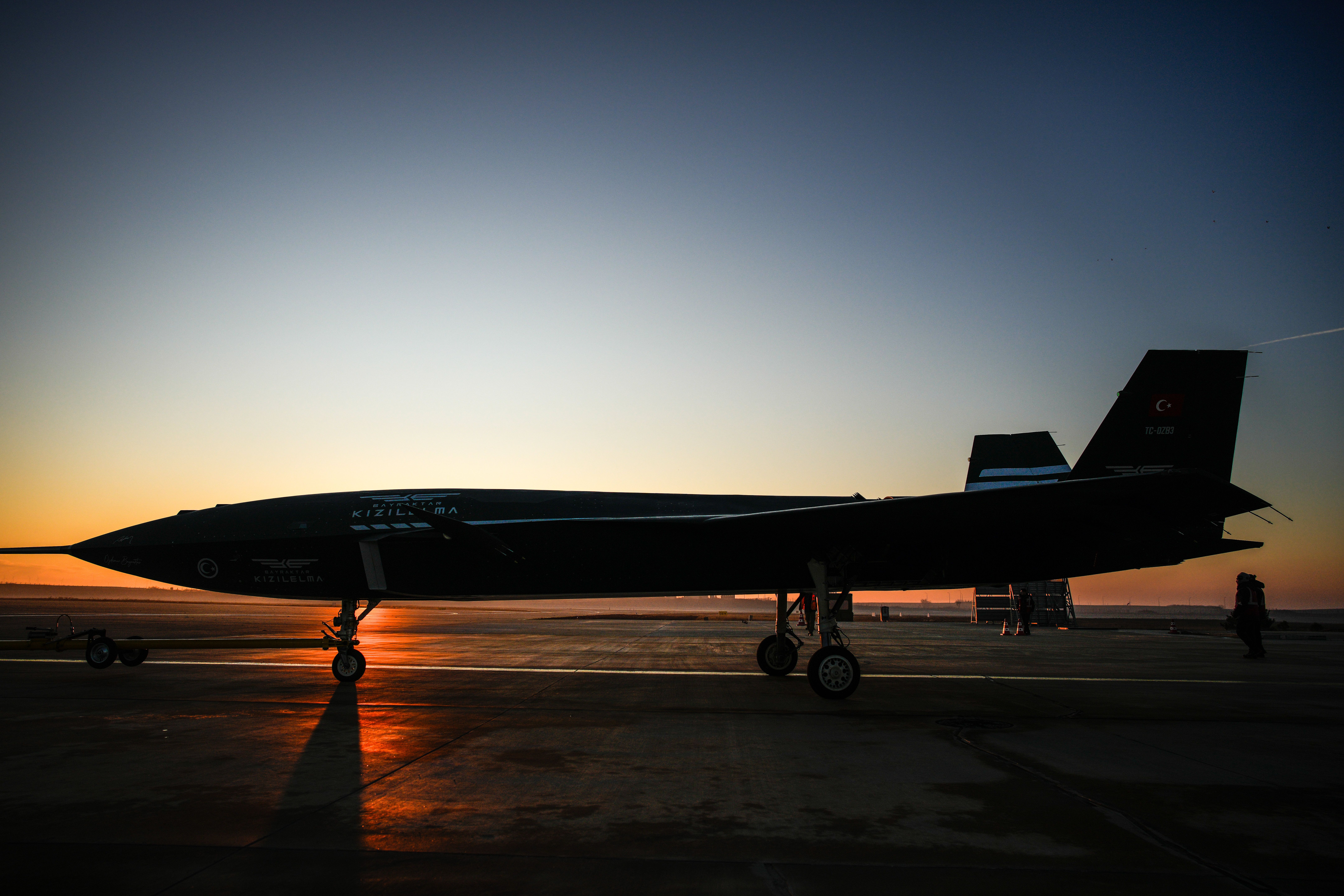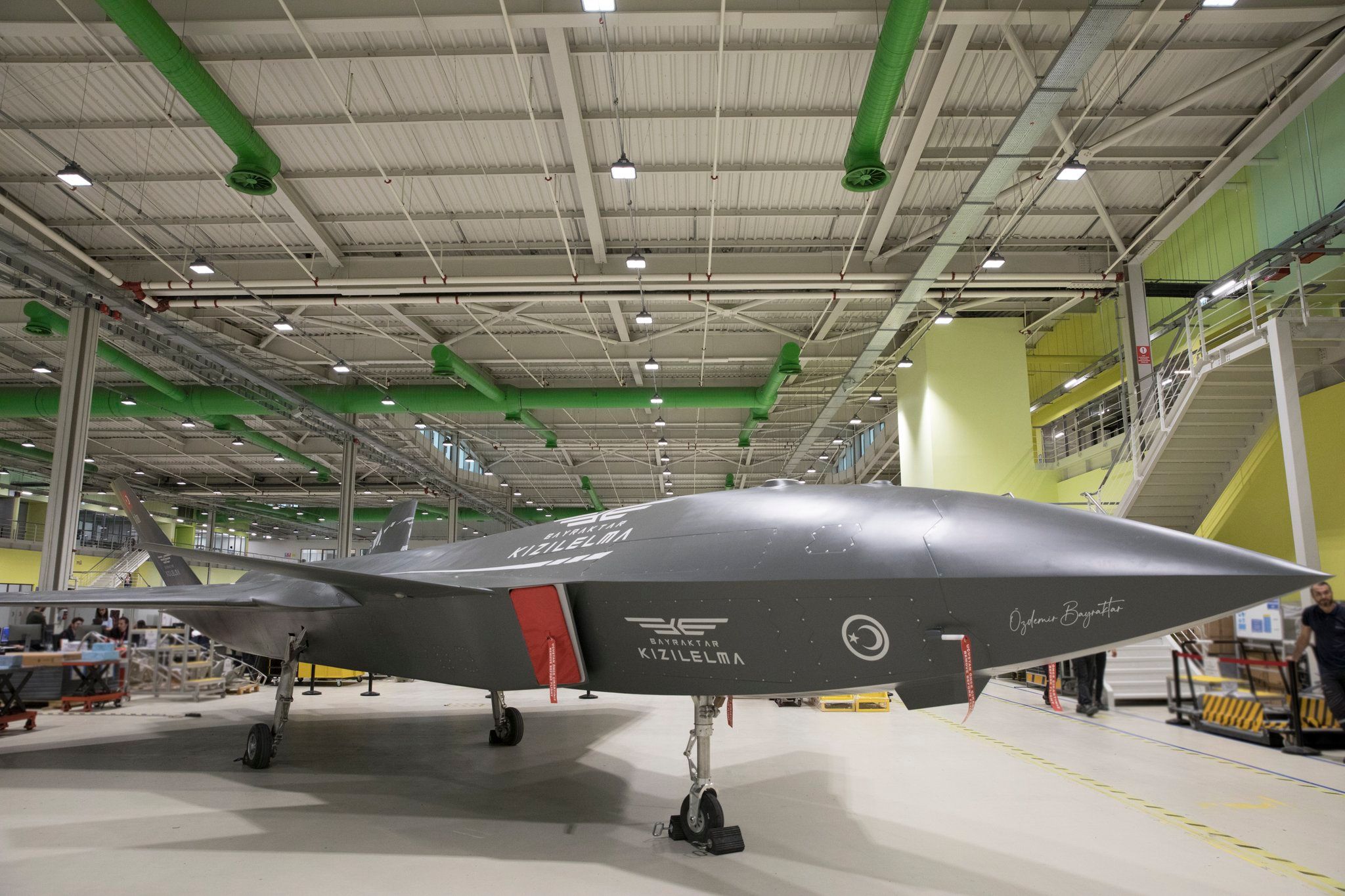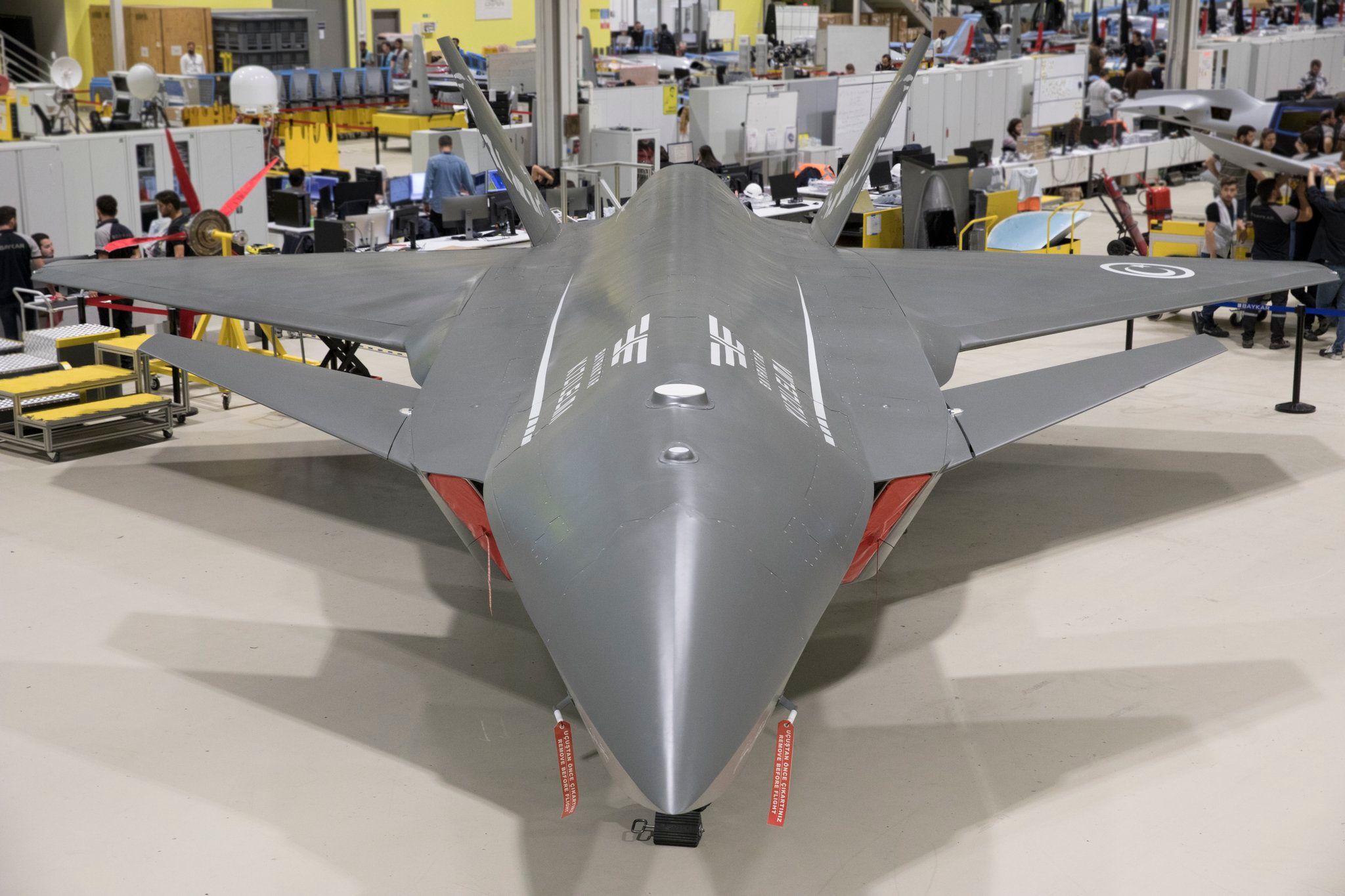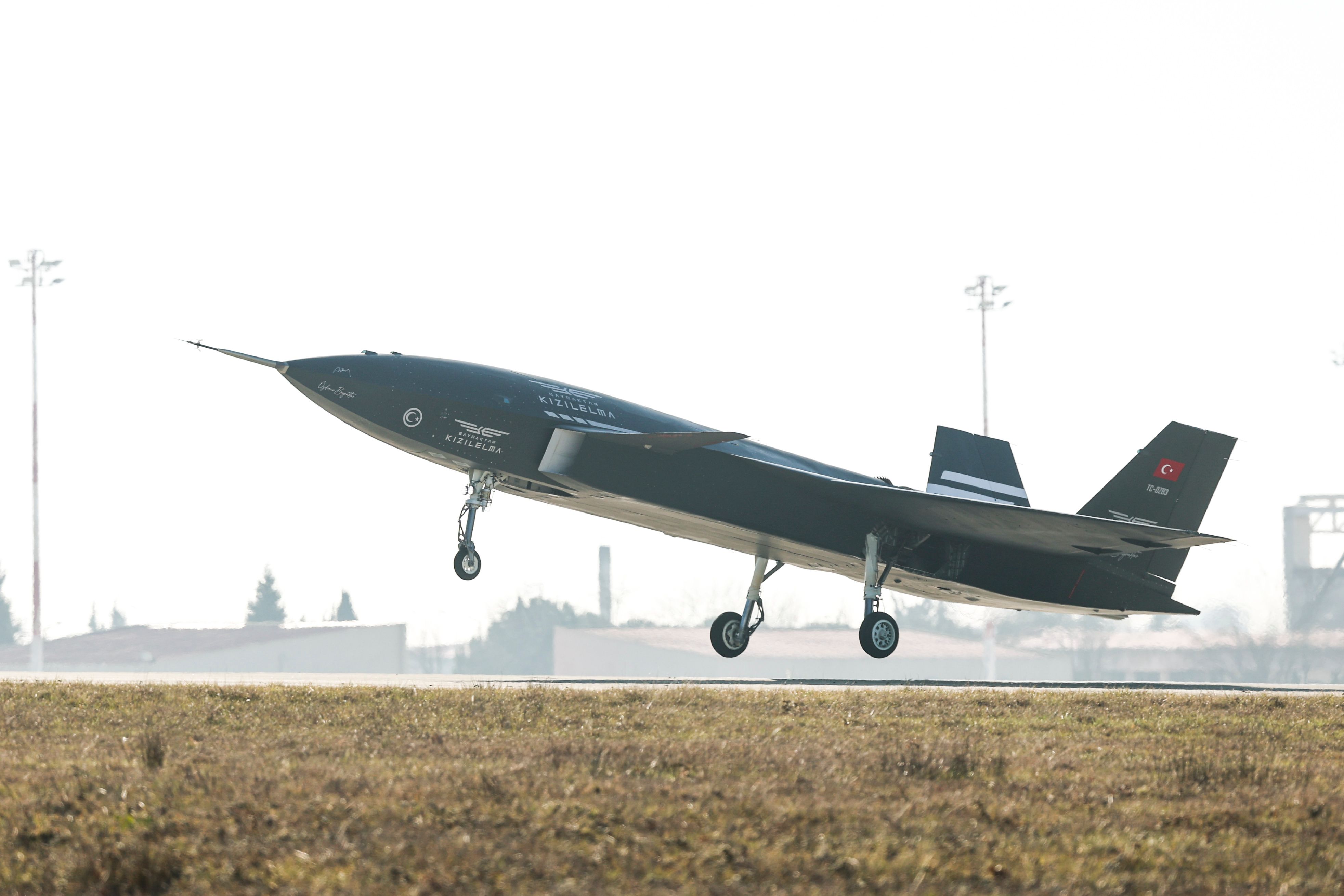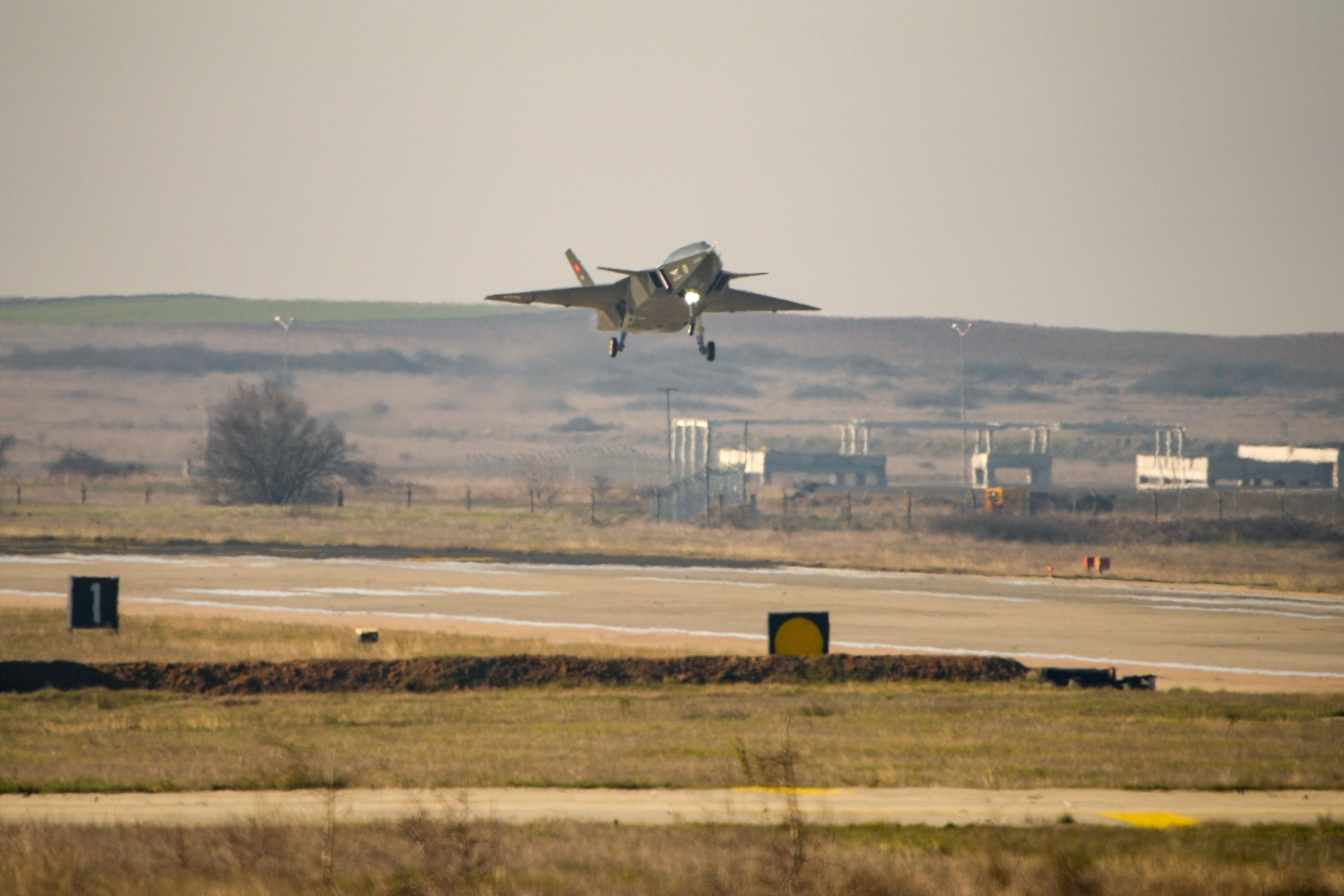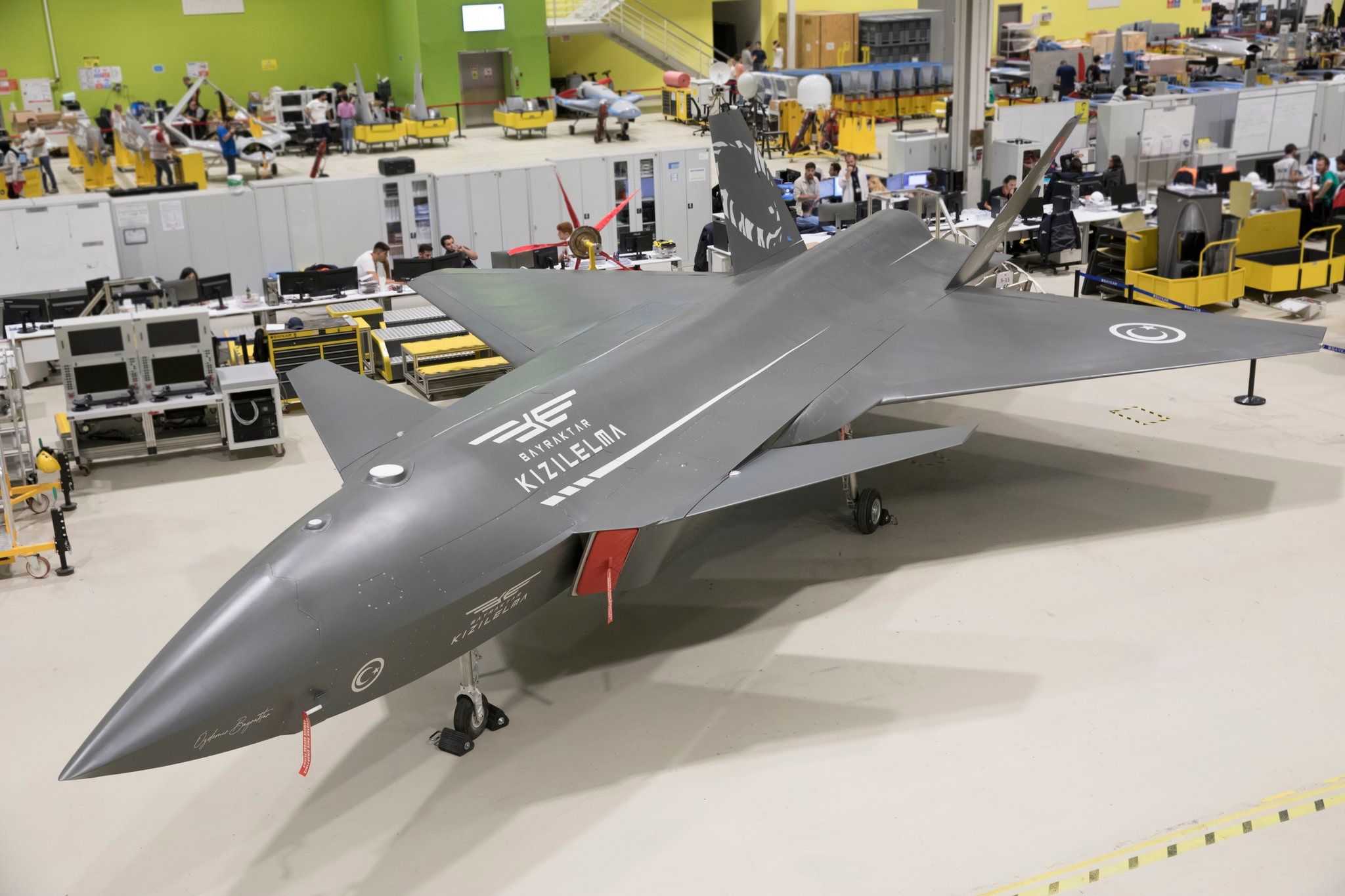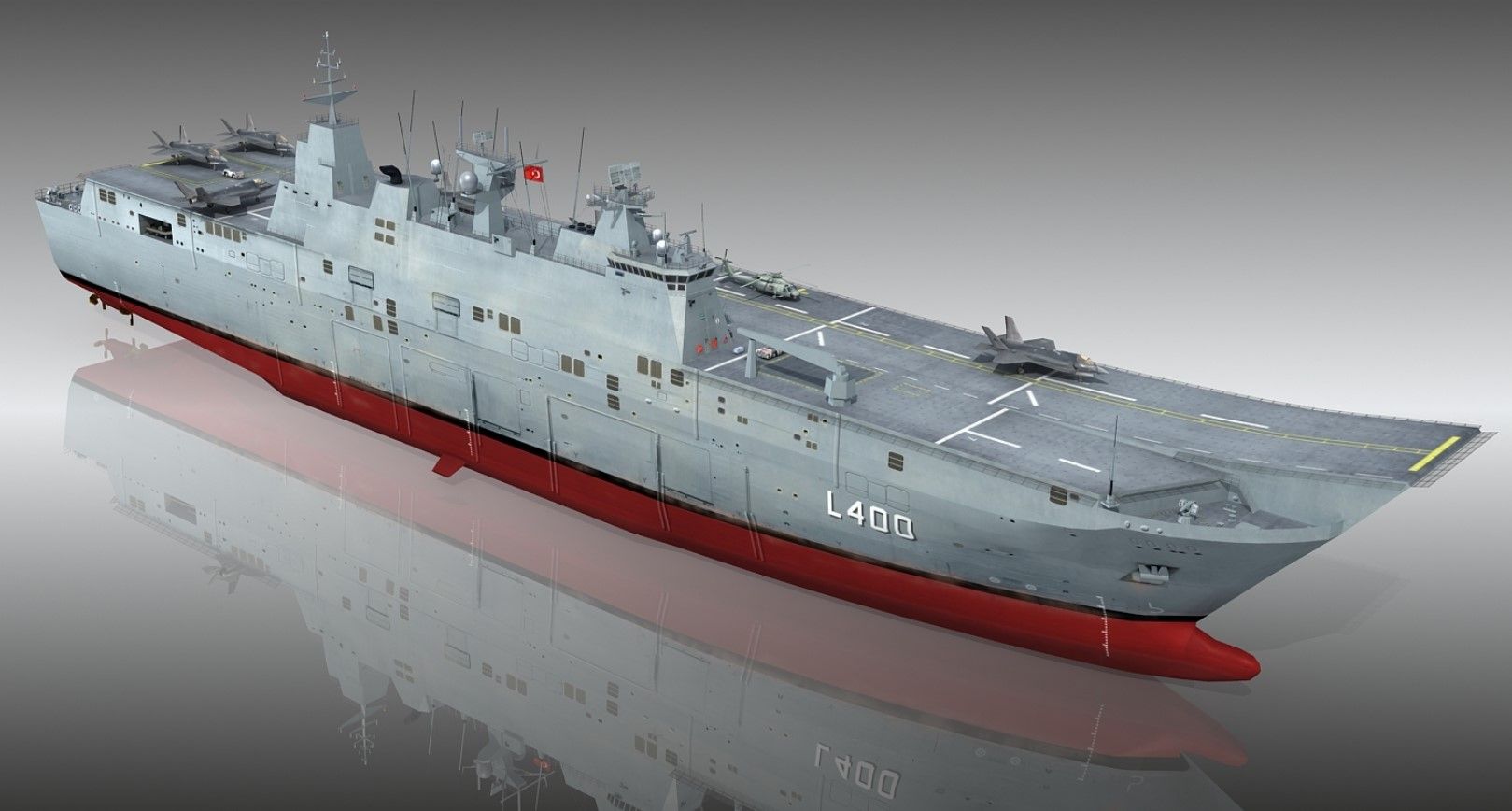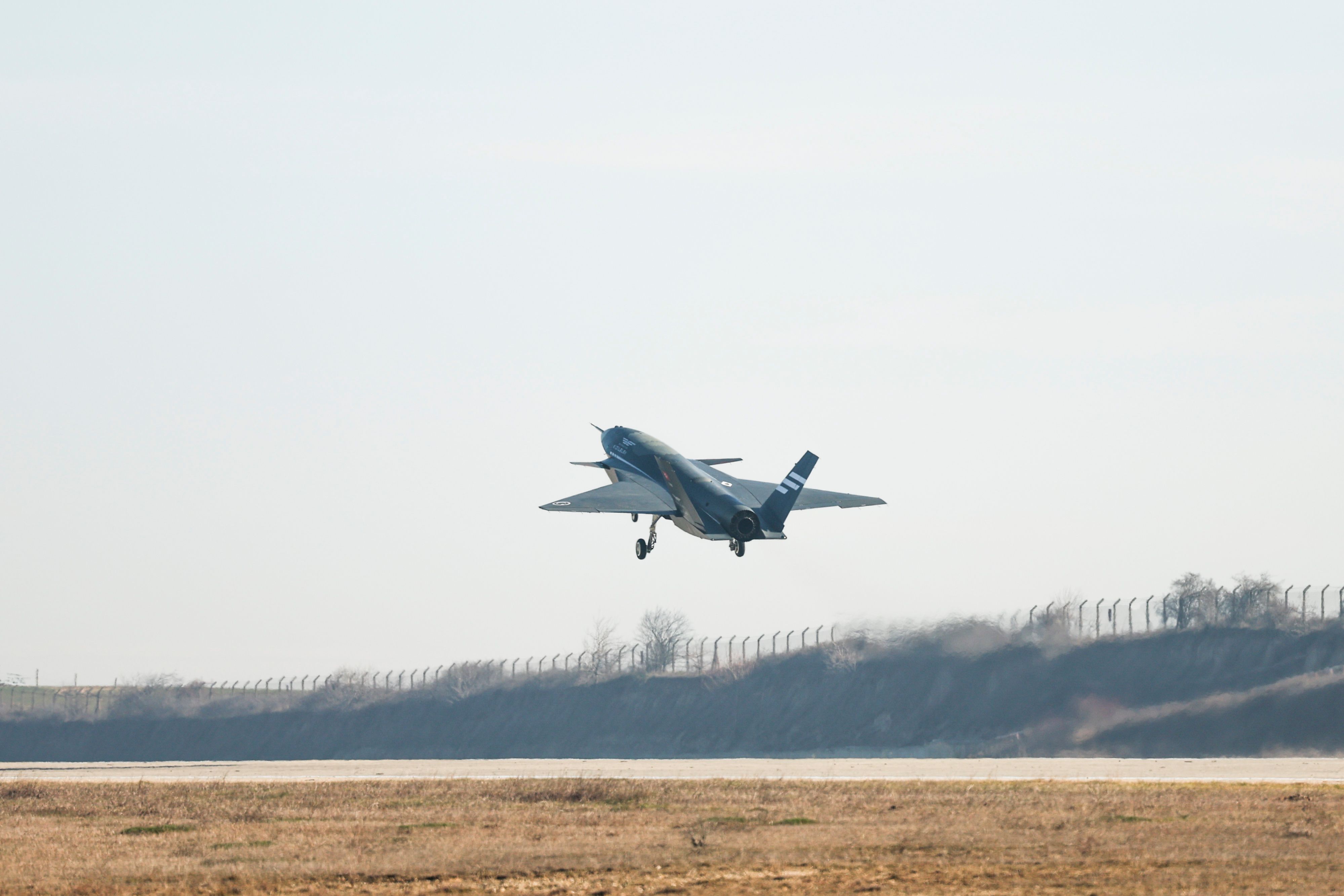Baykar’s Bayraktar KIZILELMA: Turkey’s 1st-Ever Unmanned Fighter Jet
What’s brewing in the labs at Baykar Technologies? Well if we can tell anything from the recently released images of the Bayraktar KIZILELMA, a lot of exciting new UCAV tech will be hitting the flightline very soon. Turkey’s armed forces have one of the largest fleets of unmanned combat aerial vehicles (UCAV) in the world.
The KIZILELMA is spearheaded by Baykar, one of the best Turkish technology companies in the domestic, defense-industrial sector of Turkey. The concept emerged from decades of research, local manufacturing growth, and strategic policy evolution that has historically focused on in-house development of defense technologies.
Photo: Baykar Technologies
Developers in Turkey have pursued a design that merges aerodynamic efficiency with stealth profiles while accommodating weapons flexibility and airframe survivability. Contemporary UCAV platforms often adopt basic, lightweight shapes to maximize fuel efficiency and enhance maneuverability. The Bayraktar KIZILELMA deviates from this trend with its low-observable airframe and carefully contoured fuselage to follow the design principles of a fifth-generation
stealth fighter.
Photo: Baykar Technologies
The KIZILELMA is much like the US Air Force’s
and US Navy’s endeavors to bring a fully armed and capable fighter drone into battle alongside their manned jets. The KIZILELMA is expected to be both a land and ship-based platform, and as the Loyal Wingman ( Collaborative Combat Aircraft
) of the USAF would fly into battle alongside F-22s
and F-35s the KIZILELMA is likely to be seen soaring through the skies alongside the TAI TF KAAN, Turkey’s stealth fighter currently under development.
Design philosophy and innovation
Unmanned fighter platforms offer distinct advantages for militaries seeking cost-effective solutions without compromising combat performance. Modern fighter jets impose considerable operational and maintenance expenses. In contrast, unmanned assets provide lower procurement and sustainment costs and personnel and logistical needs. Turkey’s emphasis on domestically produced UAVs aligns with the global trend of expanding unmanned capabilities to the frontline. With the wealth of experience that Turkey’s manufacturers and armed forces have, the KIZILELMA will be a fearsome presence on the battlefield.
Photo: Baykar Technologies
The appearance of the KIZILELMA bears a more than minor resemblance to the Chengdu J-20
of the Chinese PLAAF. Given its development as a stealth platform and the highly overlapping shapes of fifth-generation aircraft, it’s not very surprising that it would share some lines with another low-observability aircraft. Just as the Zhuhai airshow prompted endless comparisons between the Chinese J-35 and the US F-35, we may have found another doppelganger case.
The maiden flight of the Bayraktar KIZILELMA took place in December 2022 after years of research and development. Meanwhile, the J-20 was first spotted in 2021, a year earlier.
Photo: Baykar Technologies
The prototype of the Bayraktar KIZILELMA was showcased at TEKNOFEST 2022 to demonstrate the country’s UAV production capabilities. At the time, the low-observability shape, single-engine layout, and the potential for both land-based and maritime operations were all clearly demonstrated. As it has yet to enter full-rate production, it’s likely that the remaining development includes refining the flight control system, sensor systems, and stealth optimization. Over time, the KIZILELMA could also integrate advanced artificial intelligence routines for near-autonomous tactical decision-making, further reducing the burden on operators.
Its design will allow for infiltration of contested airspace under automated or remote control. The onboard sensor modules and mission-specific payloads can be customized based on operational requirements, from air superiority to close air support. The KIZILELMA is expected to enter service in 2025, while the TF KAAN is not likely to achieve that until the 2030s, meaning that the first fully operational combat aircraft of the Turkish Air Force may not be one with a pilot.
Operational testing and milestones
Bayraktar KIZILELMA shares general design elements with other well-known global UCAV programs. Platforms like the US Navy’s
X-47B and the Russian Su-70 Okhotnik clearly emphasize stealth design and combat mission tasking. Turkey is right at the top of the race with their strong domestic developers producing large numbers of drones that have already seen battlefield success and export popularity.
Photo: Baykar Technologies
As the Turkish Foundation for Political, Economic and Social Research, or SETA reports:
“The emerging unmanned military platforms, smart systems and munitions manufactured by Turkey have become popular in the international defence market. It was Turkish-made drones with their modern features that proved the advanced air defence systems archaic in Libya, Idlib, Nagorno-Karabakh, and lately in Ukraine.”
According to baykartech.com, the Bayraktar KIZILELMA soared into the skies for the second time at Akinci Flight Training and Test Center in Corlu, Tekirdag on January 18th, 2025. The second airframe is a good sign that the program is advancing nearer to production. Parallel testing is quicker to validate design criteria with each prototype receiving iterations of modifications, updated avionics, or software improvements that steadily push forward to the final approval to begin serial manufacturing.
Photo: Baykar Technologies
Rival designs may offer more powerful engines or superior stealth coatings, but the KIZILELMA will offer an optimal blend of affordability, reliability, and it is much nearer to achieving frontline service than virtually any competition.
Weapons systems and avionics
The dedicated engineers and technicians at Baykar designed the KIZILELMA for a multirole payload. As such, it has both an internal weapon bay for stealth-oriented missions and external hardpoints that provide flexibility when radar visibility isn’t a concern.
Photo: Baykar Technologies
The avionics suite will use a sensor fusion of data links, electronic warfare systems, optics and other devices for threat detection as well as targeting. A domestically produced AESA (Active Electronically Scanned Array) radar is expected to be installed as the primary sensor. The Aselsan Common Aperture Targeting System, an Electronic Warfare Pod, and a Turkish-made SIGINT module are also anticipated to be offered for advanced, on-board data processing.
Key specs of the Bayraktar KIZILELMA
- Capacity: 1,500 lb (3,300 lb)
- Length: 48 ft 3 in (14.7 m)
- Wingspan: 32 ft 10 in (10 m)
- Height: 10 ft 10 in (3.3 m)
- Max takeoff weight: 13,200 lb (5,987.4 kg)
- Fuel capacity: Jet-A1 or JP-8 (unspecified capacity)
- Powerplant (Kızılelma-A): 1 × Ivchenko-Progress AI-25TLT Turbofan, 3,790 lbf (16.9 kN) thrust (no afterburners)
- Powerplant (Kızılelma-B): 1 × Ivchenko-Progress AI-322F Turbofan, 5,510 lbf (24.5 kN) thrust dry, 9,900 lbf (44 kN) with afterburner
- Maximum speed: 680 mph (1,100 km/h, 590 kn) 0.9 Mach
- Cruise speed: 457 mph (735 km/h, 400 kn) 0.6 Mach
- Combat range: 580 mi (930 km, 500 nmi) on internal fuel
- Endurance: 5-6 hours
- Service ceiling: 45,000 ft (14,000 m)
- Operational altitude: 35,000 ft (11,000 m)
- Hardpoints: 2 × internal stations (expected), 6 × external stations on wings (expected)
- Avionics: National AESA Radar, Aselsan Common Aperture Targeting System, Electronic Warfare Pod, National SIGINT module
Strategic implications
The KIZILELMA is not only being developed as a domestic weapons system because of Turkey’s desire to have a strong, home-grown industrial base but also because the Turkish armed forces use tailor-made weapons systems, data nets, and other hardware that is unique to their equipment. These are the same motivating reasons that TAI is developing a Turkish-made stealth fighter, TF KAAN, even though projected costs per unit are likely to exceed the F-35
export model’s price tag.
Photo: Baykar Technologies
The areas of combat that the KIZILELMA will be tasked with include power projection in contested areas, close air support (CAS) for ground operations, and intelligence, surveillance, and reconnaissance (ISR). Naval service will demand operations with short-take-off and arrested landing on amphibious assault ships akin to aircraft carriers. Deployed alongside the naval forces, the KIZILELMA will execute expeditionary missions, maritime patrol, maritime strike, fleet defense, and more.
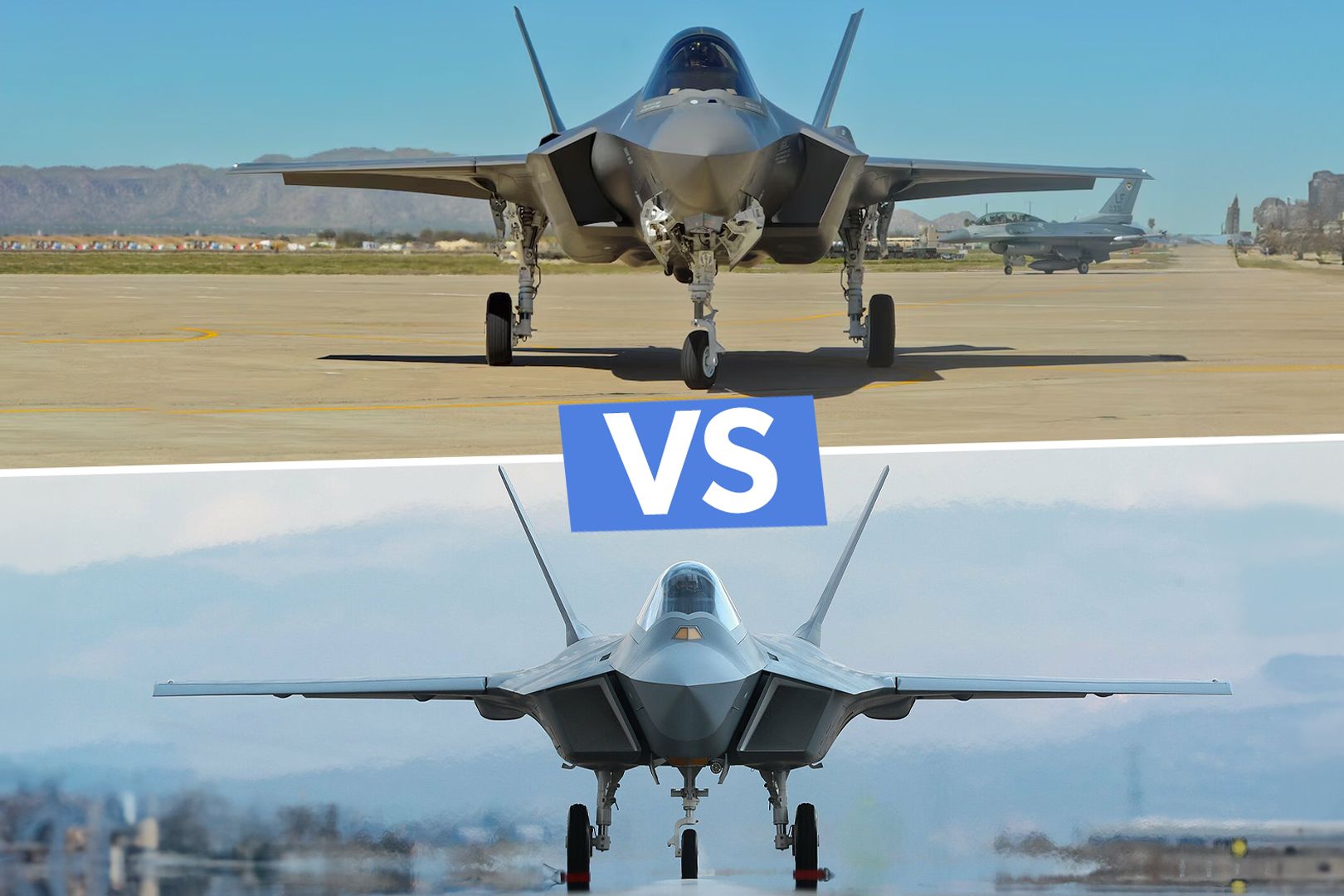
Related
Turkey’s KAAN Fighter vs US F-35: A Closer Look At Feuding Fighter Jet Capabilities
In spite of Turkey’s ties with Russia, it remains a U.S. ally via NATO. Now, its KAAN fighter is attempting to rival America’s F-35.
Some Western UCAV prototypes focus on deep penetration and strategic bombing roles, while others favor air-to-air combat or reconnaissance. The KIZILELMA’s conceptual intent suggests it aims to balance multiple mission-sets, aiming to provide a well-rounded asset that can fill basically operational in the Turkish Air Force’s force structure to dramatically improve readiness and mission capability from the unit-level up to the highest strategic level.
Photo: Baykar Technologies
Export prospects will hinge on international demand for stealth UCAVs and appetite for the cost that would entail; however, as no competition has yet to hit production, the KIZILELMA may be in a unique position as the first to market. Countries with limited budgets might view an unmanned fighter as a viable alternative to fleets of manned fifth-generation fighters. However, export restrictions, licensing, and geopolitical relationships remain influential factors considering Turkey’s relationship with the United States
and their membership in the NATO
alliance.
Technological challenges and ongoing development
Turbofan-powered next-generation aircraft all face tough development challenges, particularly in controlling heat signatures and acoustic footprints while still delivering high power outputs. The KIZILELMA’s engine intake and exhaust management systems may receive further refinement to align with stealth requirements. As with China’s struggles to produce true domestic stealth, air superiority platforms – Turkey has not yet cracked the technological code to produce engines that are capable of the same power that Pratt & Whitney
, Rolls-Royce
or General Electric
have made for Western fifth-generation aircraft. At the moment, it sounds like the KIZILELMA’s powerplane will be a subsonic unit.
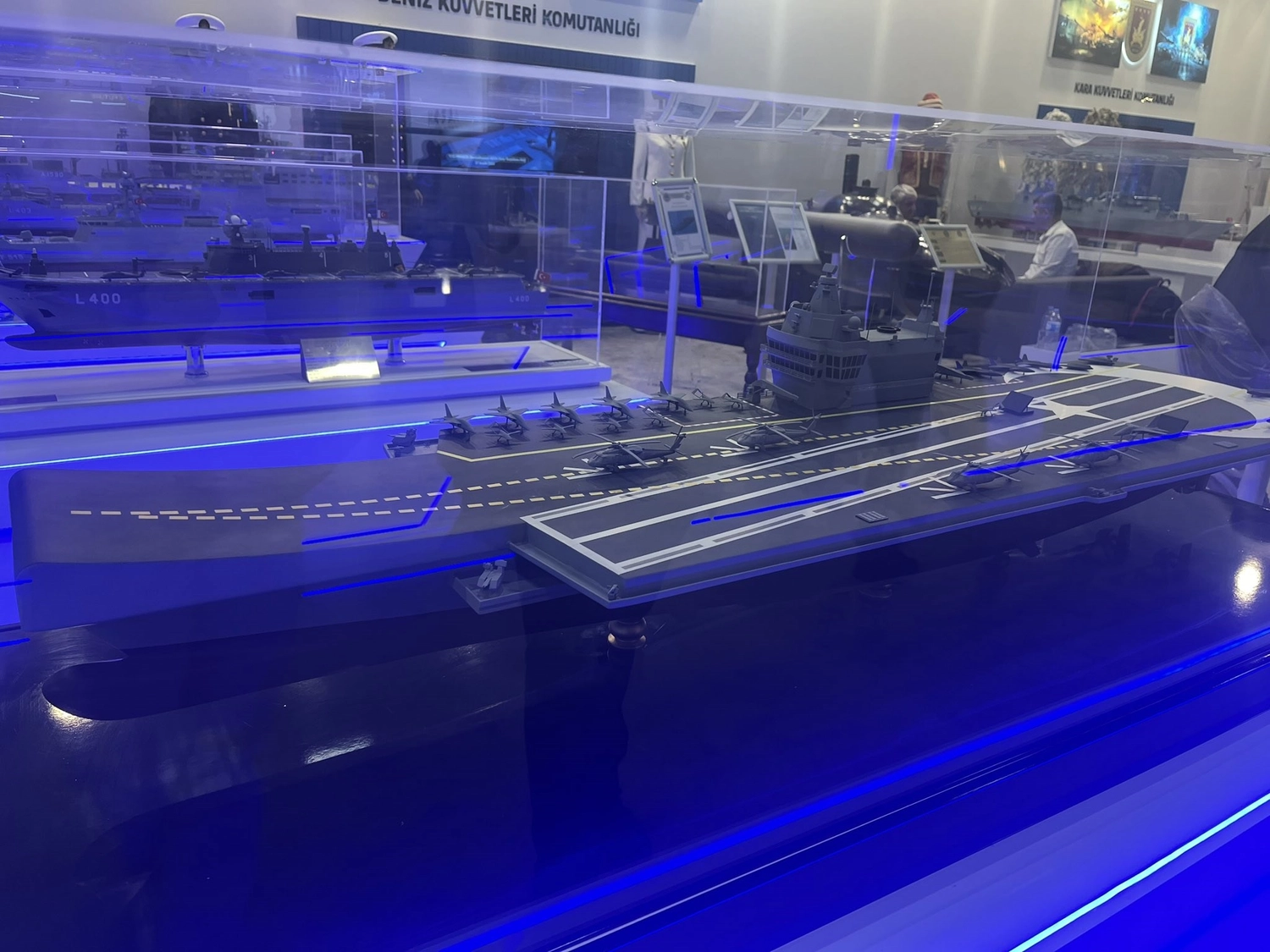
Related
Turkey Launches Construction Of MUGEM Aircraft Carrier
Turkey’s new MUGEM carrier features an optimized hull form for superior seakeeping, stability and maneuverability, with a bow design that reduces fuel consumption by 1.5% and improves underwater noise propagation.
MUGEM will initially have three runways — two for takeoff and one for landing — without a catapult system. However, the report states that a modular ramp design will be used until a domestic catapult system is developed.
Preliminary plans indicate three distinct take-off spots on the carrier: one for the TB-3 UCAV combat drone near the bridge level, another for the Hürjet manned aircraft on the port side, and a third for the Kızılelma unmanned jet on the port quarter.
Additionally, the ship will be equipped with three arresting wires and an angled deck for efficient and safe landings.
For its air wing, the report says the carrier can house up to 50 aircraft, including manned and unmanned systems, with space for 20 aircraft on the deck and 30 in the hangar.
MUGEM will be
The Bayraktar KIZILELMA is well into its rigorous flight testing cycle, showing the world that the vision for a homegrown, unmanned fighter is very nearly a reality. Third-party defense analysts have taken notice of its quick development cycle and adaptive design philosophy – if all continues to go well, Turkey may just be the first to bring a stealth UCAV online in active service.

